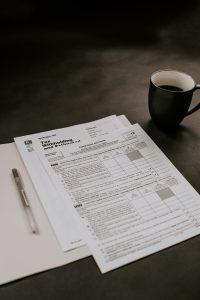Fibonacci is a mathematical sequence that has been used in trading for decades. It is a series of numbers that follow a specific pattern and can be used to identify potential levels of support and resistance in financial markets. In forex trading, Fibonacci retracements are a popular tool used by traders to help identify potential entry and exit points. However, knowing when to use Fibonacci in forex is crucial for successful trading.
The Fibonacci sequence is a series of numbers that follows a specific pattern. The sequence starts with 0 and 1, and each subsequent number is the sum of the two preceding numbers. The sequence looks like this: 0, 1, 1, 2, 3, 5, 8, 13, 21, 34, 55, 89, 144, and so on. The Fibonacci sequence is important in trading because it can be used to identify potential levels of support and resistance in financial markets.
One of the most common ways to use Fibonacci in forex trading is through retracements. Fibonacci retracements are a popular tool used by traders to identify potential levels of support and resistance. A retracement is a temporary reversal in the direction of an asset’s price movement. Fibonacci retracements are used to identify potential levels where the price of an asset may retrace before continuing in the original direction.
Fibonacci retracements are calculated by taking the high and low points of an asset’s price movement and dividing the vertical distance by the key Fibonacci ratios of 23.6%, 38.2%, 50%, 61.8%, and 100%. These ratios are based on the Fibonacci sequence and represent potential levels of support and resistance.
When to Use Fibonacci in Forex
Fibonacci retracements can be used in a variety of ways in forex trading. Here are some of the most common scenarios where Fibonacci retracements can be used:
1. Identifying Potential Entry Points
Fibonacci retracements can be used to identify potential entry points for a trade. Traders can look for retracements to the key Fibonacci ratios of 38.2% or 61.8% as potential entry points. If the price of an asset retraces to one of these levels, it may indicate that the price is likely to continue in the original direction, providing an opportunity for traders to enter a trade.
2. Identifying Potential Exit Points
Fibonacci retracements can also be used to identify potential exit points for a trade. Traders can look for retracements to the key Fibonacci ratios of 23.6% or 50% as potential exit points. If the price of an asset retraces to one of these levels, it may indicate that the price is likely to reverse, providing an opportunity for traders to exit a trade.
3. Confirming Trends
Fibonacci retracements can also be used to confirm trends. If the price of an asset retraces to one of the key Fibonacci ratios and then continues in the original direction, it may indicate that the trend is likely to continue. Traders can use Fibonacci retracements as a confirmation tool to help them identify potential trends and make more informed trading decisions.
4. Identifying Potential Support and Resistance Levels
Fibonacci retracements can be used to identify potential levels of support and resistance. If the price of an asset retraces to one of the key Fibonacci ratios and then bounces off that level, it may indicate that the level is a potential level of support or resistance. Traders can use Fibonacci retracements to identify these levels and make more informed trading decisions.
Conclusion
Fibonacci retracements are a popular tool used by traders to help identify potential entry and exit points in forex trading. However, knowing when to use Fibonacci in forex is crucial for successful trading. Fibonacci retracements can be used to identify potential entry and exit points, confirm trends, and identify potential levels of support and resistance. Traders should use Fibonacci retracements in conjunction with other technical analysis tools and strategies to make more informed trading decisions.





